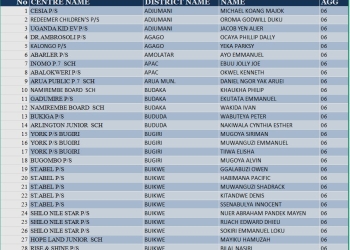
KAMPALA, Uganda — The Uganda Electricity Distribution Company Limited (UEDCL), which took over power distribution from Umeme last month, has unveiled a 100-day roadmap focusing on restoring the electricity network, connecting new customers, and implementing capital investments.
The plan was presented last week during a public forum hosted by Kigo Thinkers at the Electricity Regulatory Authority (ERA) headquarters. UEDCL officials addressed the public regarding the transition following their takeover on March 31.
Protaze Tibyakinura, UEDCL’s chief engineer and technical services officer, acknowledged the initial challenges of the transition. “We have operated for 15 days now, and the first 15 days have definitely not been easy,” he said, adding that the company was prepared for a complex handover.
UEDCL announced it would begin connecting new customers next week. “We have materials in the stores. We are now packaging and distributing them to our local offices. So, the new connection line is going to be open next week,” Tibyakinura stated. He assured the public that pending connection requests from Umeme’s tenure would be honored without additional charges.
The company plans to roll out ERA-approved capital projects in May, starting with the injection of approximately 500 transformers to relieve overloaded ones nationwide. “Many people have transformers that are strained, and that is also part of the outages we are experiencing,” Tibyakinura explained, noting that these investments aim to improve the reliability and quality of electricity supply. Contractors are expected to begin these upgrades by the end of April.
Larger infrastructure projects, including network extensions, new substations, and major refurbishments, are slated for implementation in May and June. Tibyakinura assured that financing would not be a constraint this year.
Addressing recent power blackouts, Tibyakinura attributed them to transitional challenges, including recruitment delays and pre-existing issues like non-functional transformers inherited from Umeme. He reported that UEDCL has already replaced about 200 faulty transformers and rebuilt 300 structures damaged by storms in its first two weeks of operation, adding that network performance has since improved.
ERA CEO Ziria Tibalwa Waako stated that UEDCL has been allocated $100 million (about 370 billion Ugandan shillings) for network restoration and upgrades over the next nine months. “Umeme has never been able to reach that in any particular year,” she said. Waako explained that UEDCL will recover these costs through tariffs, similar to Umeme’s previous practice, ensuring the company’s sustainability. The initial capital is government seed funding.
ERA has set performance targets for UEDCL, including reducing energy loss from Umeme’s 16% to 14.59% this year, with further reductions planned for subsequent years, aiming toward universal electricity access by 2030. Consistent revenue collection above 99.85% is also expected, leveraging prepaid metering for households and automated meters for industries. Waako added that all government ministries, departments, and agencies will be enrolled on prepaid three-phase meters.
Blessing Nshaho, Umeme’s chief corporate and regulatory officer, said the outgoing company handed over a significantly transformed grid after two decades of operation. He noted customer numbers grew from approximately 250,000 to over two million, with 220,000 new connections made last year alone. Revenue increased from 160 billion shillings annually to 2.5 trillion shillings. Transformer numbers rose from 5,000 to 17,000, and transmission capacity increased from 500 MVA to 2,500 MVA. Power lines were extended from 17,000 kilometers to 44,000 kilometers, and staff efficiency improved. Umeme also digitized its customer service and operational framework. Nshaho highlighted the reduction in energy loss from 38% to 16% and improved collection rates as significant boosts to distribution efficiency. He also noted the handover of 16 substations, including refurbished and new switching stations, and an increase in the national electricity access rate from 5% to 57% (including off-grid).
















